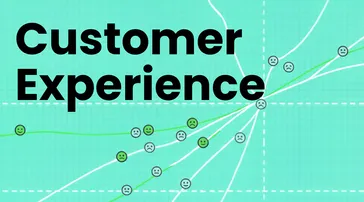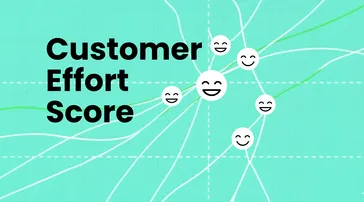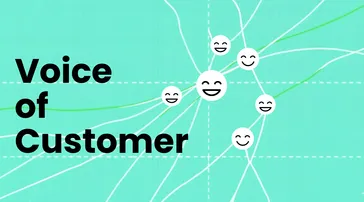4 min read
Listen and understand your customers. Win them at any stage of their journey.
cx Platform
Customer feedback has emerged as a crucial compass guiding companies towards success. Gone are the days when customer interaction ended with a purchase; now, it’s an ongoing relationship that demands attention, care, and responsiveness. The concept of a “Closed Loop Feedback System” has become pivotal in this scenario, offering a structured approach to gather feedback and act upon it in a way that fosters continuous improvement.
What is Closed Loop Feedback?
Closed Loop Feedback is a systematic method that collects customer feedback, analyzes it, and implements changes based on the insights gained. The ‘closed loop’ signifies a continuous cycle, where feedback isn’t just received but actively utilized to refine products, services, and overall customer experience.
The four pillars of Closed Loop Feedback
- Capturing the Voice of the Customer (VoC)
The journey begins by actively seeking out customer opinions. Whether through surveys, social media, reviews, or direct interactions, the goal is to capture the Voice of the Customer. This raw, unfiltered feedback is a goldmine of information, providing insights into customer preferences, pain points, and expectations.
- Analysis for Actionable Insights
Once the feedback is collected, the next step is to analyze it effectively. Identify patterns, common themes, and areas of improvement. Advanced analytics tools can help in extracting meaningful insights from large datasets, giving you a clear picture of what matters most to your customers.
- Swift and Strategic Response
The true essence of a closed-loop system lies in its responsiveness. Act promptly on the insights gained. Whether it’s fixing a glitch, enhancing a feature, or addressing a specific concern, your response should be swift and strategic. This resolves immediate issues and demonstrates to customers that their feedback is valued.
- Closing the Communication Loop
Keep your customers in the loop regarding the changes you’ve made based on their feedback. This shows transparency and reinforces the idea that their opinions matter. Communication can happen through various channels – from personalized emails to social media updates.
How can you effectively conclude the feedback loop?
Timeliness is key: Act promptly on received feedback to keep the conversation alive and relevant. Failing to respond promptly may make your reply seem out of place or confusing to the customer.
Precision is crucial: Ensure a clear and accurate understanding of the customer’s history with your business and the events that prompted their feedback. Misinterpreting the situation or providing an irrelevant follow-up can hinder rather than improve the customer relationship.
Proportionate responses: Recognize that different customers have varying needs. Tailor your response based on factors such as the size of the purchase, the existing customer relationship, and the dynamics of the interaction leading to the feedback. A one-size-fits-all approach is unlikely to resonate with diverse customer experiences.
Benefits of Closed Loop Feedback system
Implementing a closed-loop feedback system can yield a multitude of benefits for your business:
- Enhanced Customer Satisfaction
By actively addressing customer concerns and making improvements based on their feedback, you demonstrate a commitment to customer satisfaction. This can lead to increased loyalty and positive word-of-mouth.
- Continuous Improvement
A closed-loop system fosters a culture of continuous improvement within your organization. Regularly analyzing and acting on feedback keeps your products and services aligned with evolving customer needs and market trends.
- Data-Driven Decision Making
Access to a wealth of customer data allows for informed decision-making. It helps identify trends, predict future needs, and make strategic business choices backed by real customer insights.
- Competitive Edge
Companies that actively listen to and respond to customer feedback gain a competitive edge. It sets them apart as customer-centric organizations, attracting new customers and retaining existing ones in a fiercely competitive market.
Optimizing Customer Insights
For companies utilizing a Customer Relationship Management (CRM) system, it is beneficial to establish a connection with the case management system as well. Typically achieved through an Application Programming Interface (API), this integration facilitates the seamless exchange of data between these platforms.
The integration with your CRM ensures that your team has immediate access to pertinent information when needed. This means that when addressing a complaint, customer service agents can access comprehensive background details about the customer. Additionally, when a team member engages with the customer in the future, they can readily retrieve information related to any previous complaints, fostering a more informed and efficient customer interaction.
Start closing the loop
In a world where customer expectations are ever-evolving, businesses prioritizing customer feedback through closed-loop systems are better equipped to thrive. The continuous cycle of listening, analyzing, and acting resolves immediate issues and positions your brand as one that values and prioritizes its customers. As you embark on this journey, remember that closing the loop isn’t just about fixing problems – it’s about building stronger, more meaningful relationships with those who matter most: your customers.





